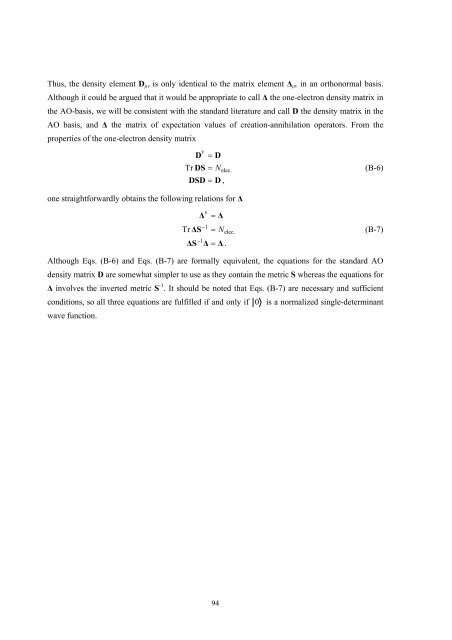Get my PhD Thesis
Get my PhD Thesis
Get my PhD Thesis
Create successful ePaper yourself
Turn your PDF publications into a flip-book with our unique Google optimized e-Paper software.
Thus, the density element D µν is only identical to the matrix element ∆ µν in an orthonormal basis.<br />
Although it could be argued that it would be appropriate to call ∆ the one-electron density matrix in<br />
the AO-basis, we will be consistent with the standard literature and call D the density matrix in the<br />
AO basis, and ∆ the matrix of expectation values of creation-annihilation operators. From the<br />
properties of the one-electron density matrix<br />
D<br />
†<br />
= D<br />
Tr DS = N<br />
DSD = D ,<br />
elec.<br />
(B-6)<br />
one straightforwardly obtains the following relations for ∆<br />
∆<br />
Tr ∆S<br />
−1<br />
†<br />
−1<br />
= ∆<br />
= N<br />
∆S ∆ = ∆.<br />
elec.<br />
(B-7)<br />
Although Eqs. (B-6) and Eqs. (B-7) are formally equivalent, the equations for the standard AO<br />
density matrix D are somewhat simpler to use as they contain the metric S whereas the equations for<br />
∆ involves the inverted metric S -1 . It should be noted that Eqs. (B-7) are necessary and sufficient<br />
conditions, so all three equations are fulfilled if and only if 0 is a normalized single-determinant<br />
wave function.<br />
94

















